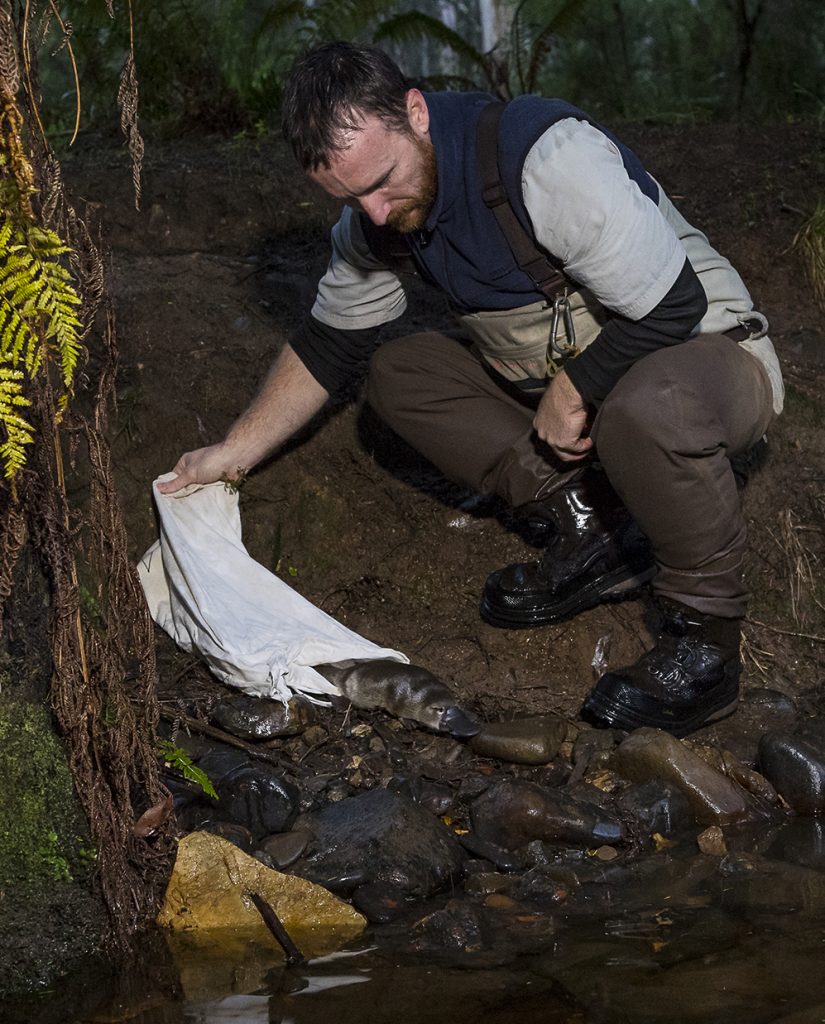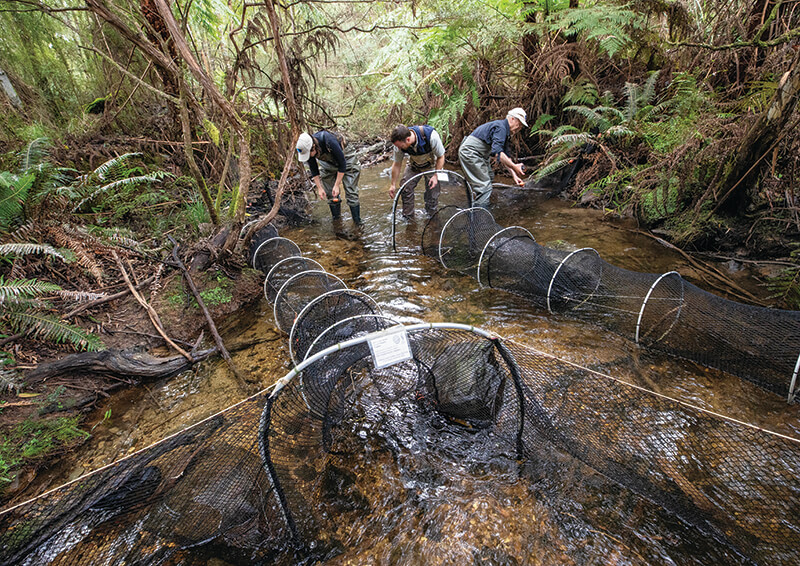Tracking the Elusive Platypus
As a species that depends on freshwater habitats, the platypus is vulnerable to environmental changes and habitat loss, and research suggests their population is in decline. SDZG teamed up with the University of Melbourne and cesar (an Australian science-based environmental research and consulting company) on a multi-year research project to investigate the status of platypus populations and threats to the species’ survival. Researchers set out to map the distribution of platypuses, using an innovative technique: they analyzed water samples from hundreds of waterways to identify traces of DNA, which are found in the skin cells, hair, feces, or mucus animals leave in the water. Using this “environmental DNA” (referred to as eDNA), researchers can create a spatial map of where platypuses are living. In another related project, researchers use specialized, no-harm nets to briefly catch platypuses, examine them for size and health, and then release them. The information gathered can then be cross-referenced with the eDNA data.

